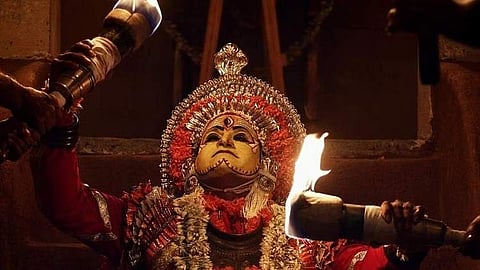
- LIFESTYLE
- FASHION
- FOOD
- ENTERTAINMENT
- EVENTS
- CULTURE
- VIDEOS
- WEB STORIES
- GALLERIES
- GADGETS
- CAR & BIKE
- SOCIETY
- TRAVEL
- NORTH EAST
- INDULGE CONNECT

2022 is a year in which regional cinema from the South has shone brightly at the box office. It’s the year of big-budget cinema, romantic comedies, relatable dramas, and engrossing thrillers. It’s also the year of small films winning big and big films expanding their territories. OTT has become a boon for producers and filmmakers during the pandemic and continues to be the alternate platform to pitch differentiating stories and modern narratives, though the web series format is yet to kick off in a big way in the South. The reason could be the time it takes to make a series when compared to a film and the time a platform takes to sift through submissions and revert. Half a year can go into making a web-series while about four months goes into making a film (if you have the script and actor dates locked).
One thing is clear: The audience likes to consume a variety of stories from both the silver screen and the small screen, and they discern why some stories don’t work and why some do. Emotions, when they resonate with the viewer and when they are relatable, is a key factor in deciding why a particular film works. Some stories keep us in awe while others make us introspect and teary-eyed. Content gets divided into categories, and while some stories leave us better informed, some others leave us wanting to be better people. The latter is the hardest to achieve in any creative expression. If a work of art can leave its audience spellbound and make them wish to go beyond the ordinary randomness of life, there, art finds its meaning.
I was recommended Kantara from such a (lofty, at times) perspective by a whole host of people but was able to watch the film only on its roaring (literally) 50th day. The film left me underwhelmed for the most part, angry at its portrayal of women (objectification in the name of lust and stalking in the name of love, and please don’t argue that this is how rural people are). I ended up liking the only good actor (and character) in the film, played by Kishore who begins as a ‘cliche villain’ in the film but who, in essence, is the man with a conscience, as depicted in the post-climax ‘Varaha Roopam’ song. The song works largely because of its music (a huge debate regarding its influence from a song by Thaikkudam Bridge) and I liked that one shot of how the ‘spirit’ unifies the policeman with other ‘custodians’ of the land.
It also made me pause and reflect on a few things we take for granted in our cinema. Like how we tend to think it must be easy for say, a Kamal Haasan, to do what he does, and yet when done by someone else, we appreciate what we recognise as 'effort'! Kantara has a lot of common elements with Virumaandi in its leading man’s character, opening sequence, and the village setup (even the romance angle seems similar, even if ineffective) and ends up religiously coloured, leaving us with a philosophy, and not a real solution.
Box-office collection alone does not alone denote a film’s success and sometimes, we the audience are as gullible as we are able to discern. Give us a few good moments and we have a large heart to forgive mediocrity. But this gap in judgment is decreasing as families get more exposed to national and international content on OTT. Terms like ‘production value’ are now discussed in drawing rooms and it makes a difference to us liking or disliking what we see. We know that a film like Thiruchitrambalam doesn’t need a song in Switzerland or that ‘larger-than-life’ now means a film like Ponniyin Selvan. We, the audience, are both loving and tough, which is why both kinds of cinema work, and in today’s times, the size of the screen on which it works doesn’t really matter as much as the rising standards of storytelling.